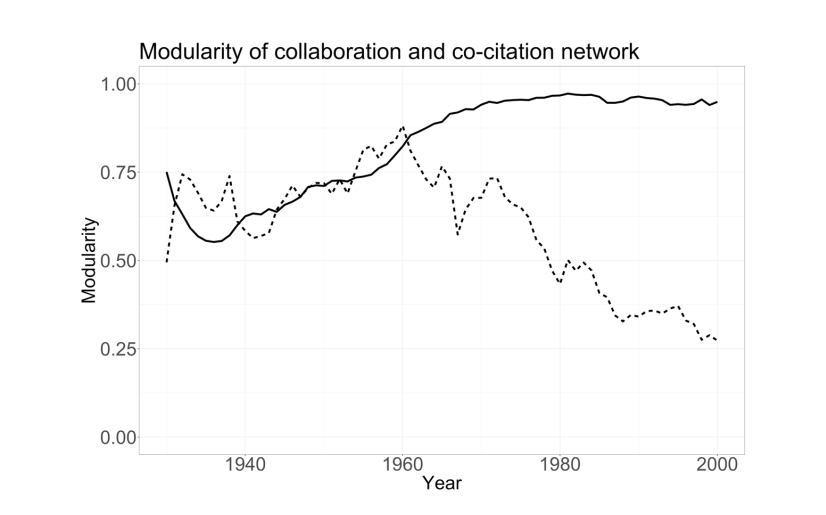Katharina Burgdorf and Henning Hillmann
Time and Place: Thursday, 01.07., 13:30–13:50 – Room 2
Session: Networks and Cultural Objects
Keywords: Cultural networks; collaboration networks; citation networks; movie networks
Background
The 1960s saw a shift from the Golden Age of Hollywood to New Hollywood. This shift included changes with respect to visual and narrative style, and mode of production. It was driven by a community of young filmmakers that shared a novel artistic understanding of auteur filmmaking and challenged the predominant commercial understanding of the Golden Age. We ask how New Hollywood filmmakers formed their collective identity and drew boundaries from the old Hollywood studio system.
Our research builds on previous sociological research that asked how movements form and institutionalize new collective identities in political, cultural or economic fields. One stream in the sociological literature argues that tangible social ties among movement members, for example through collaborations are pivotal for the construction of new identities (Gould, 1995; Tilly, 2015). A different stream of research has pointed to the importance of symbols for the construction and institutionalization of new identities (DiMaggio, 2011). Historical studies of New Hollywood reveal evidence for both mechanisms. On the one hand, the collaborative nature of filmmaking entails the emergence of dense social networks. On the other hand, filmmakers can express symbolic boundaries through the shared use of citations as, for example, expressed in dialogue sequences that one film borrows from another. We expect that a cohesive co-citation rather than collaboration network provided the relational foundation for New Hollywood filmmakers‘ collective identity.
Methods
To resolve this tension, we use data from the Internet Movie Database (IMDb) and analyze collaboration and co-citation networks of 17,783 American filmmakers and 52,353 feature films between 1930 and 2000. The two-mode collaboration network consists of filmmakers (directors and writers) that are connected to films in which they participated. The co-citation network consists of filmmakers that are connected if referring to the same film. We analyze both networks with respect to their cohesion as measured through network modularity.
Findings

The results show a continuous decrease of modularity in the co-citation network at the time of the New Hollywood movement. During the same time, modularity in the collaboration network first increases and then stagnates. These findings indicate that collective identity formation of New Hollywood filmmakers operated through symbolic networks (i.e. co-citation networks) rather than tangible social networks (i.e. collaboration networks). While modularity of the collaboration network increases and then stagnates during the period of the New Hollywood movement, modularity of the co-citation network first increases and then starts to continuously decrease during the same period. These findings resonate with the idea of auteur filmmaking. Auteur filmmaking highlights the role of the individual filmmaker (director and or writer) as decisive for the filmmaking process which rather prohibits the emergence of dense collaboration networks. We argue that symbolic references allowed New Hollywood filmmakers to construct social and symbolic boundaries from the studio identity of the Golden Age of Hollywood, and to institutionalize a canon of valuable films that still serves as a touchstone for filmmakers today.
References
DiMaggio, Paul. 2011. „Cultural networks.“ The Sage handbook of social network analysis:286-310.
Gould, Roger V. 1995. Insurgent identities: Class, community, and protest in Paris from 1848 to the Commune: University of Chicago Press.
Tilly, Charles. 2015. Identities, boundaries and social ties: Routledge.